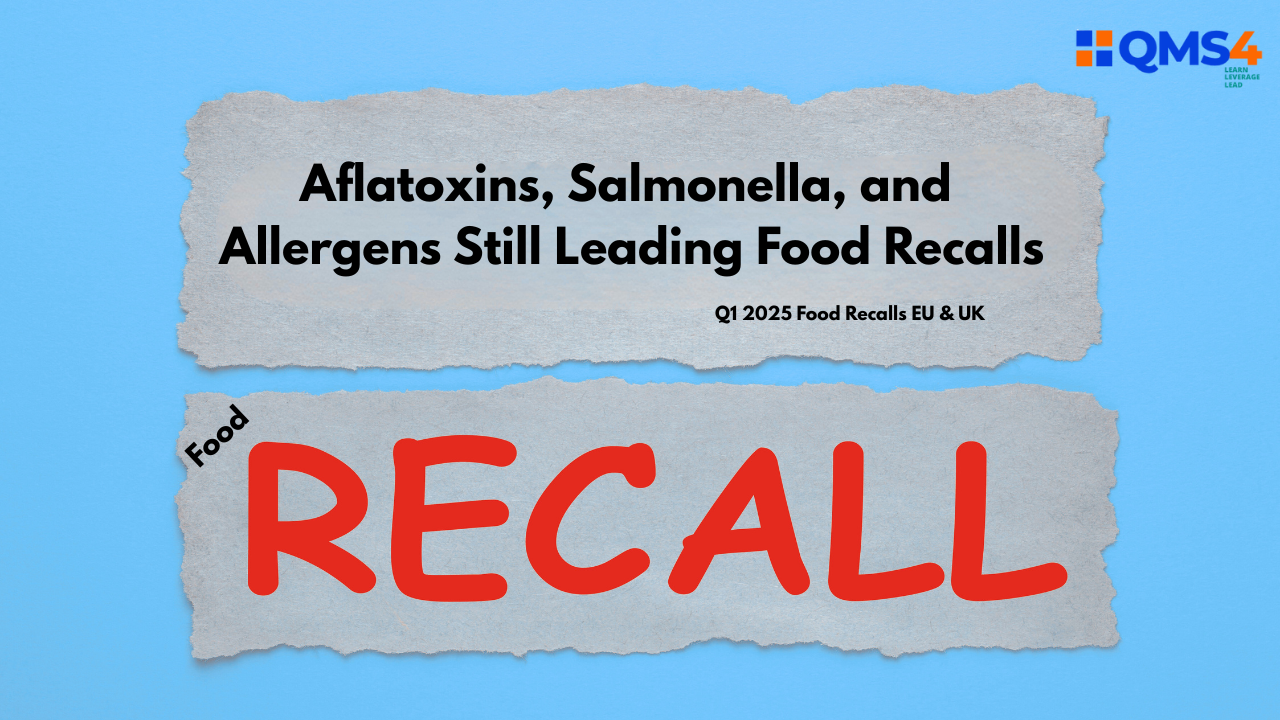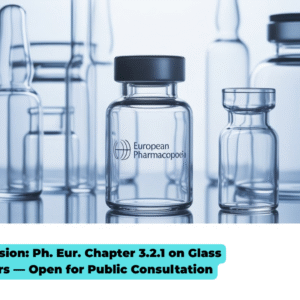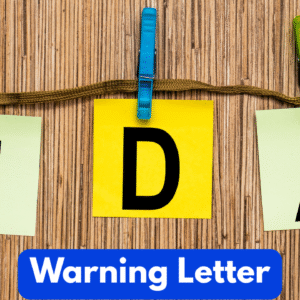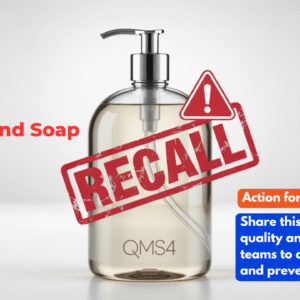📅 July 2025 | QMS4 News | Regulatory Trends & Food Safety Insights
In the first quarter of 2025, EU and UK regulators recorded a total of 1,242 food and beverage product recalls, marking a 14.5% decrease from the record-breaking 1,452 recalls in Q4 2024. While the decline offers a glimpse of progress, the numbers also reveal persistent and evolving challenges across the food safety landscape.
Top Recall Triggers: Contaminants Still Dominate
🧪 1. Non-Bacterial Contamination – 550 recalls
Despite a decrease from 609 in Q4, non-bacterial contaminants—including chemical and physical hazards—remain the leading cause of product recalls.
🔬 Aflatoxins topped the list of contaminants, contributing to 135 recall events, highlighting ongoing risks in categories like nuts, grains, and dried produce.
🦠 2. Bacterial Contamination – 237 recalls
This category showed a decline from 275 in the previous quarter.
🔥 Salmonella was the primary bacterial culprit, responsible for 174 recalls, emphasizing the need for stricter hygiene controls and thermal process validation.
⚠️ 3. Undeclared Allergens – 94 recalls
Food allergens continue to be a significant concern, particularly for vulnerable populations.
🥛 Milk was the most frequently undeclared allergen, cited in 19 recalls, signaling gaps in label verification and cross-contact prevention.
Most Affected Product Categories
| Category | Q1 2025 Recalls | Q4 2024 Recalls |
|---|---|---|
| Fruits & Vegetables | 270 | 309 |
| Nuts, Nut Products & Seeds | 150 | 159 |
| Poultry Meat & Poultry Products | 101 | N/A |
Fresh produce and plant-based ingredients continue to lead in recall volume, partly due to their vulnerability to contamination and minimal processing steps.
What This Means for Food Businesses
While the reduction in total recalls is encouraging, the quality and safety risks are far from resolved. The recurrence of specific hazards—such as aflatoxins, Salmonella, and undeclared milk—indicates systemic weaknesses in:
-
Supplier controls and verification
-
Allergen management programs
-
Environmental monitoring and sanitation
QMS4 Takeaway
“Recall data isn’t just a statistic—it’s a warning system. Every trend in contamination or mislabeling should trigger internal reviews of preventive controls, supplier quality agreements, and documentation practices.”
Action Points for QA/QC & Regulatory Teams
-
📂 Review your HACCP and FSVP plans for relevance and completeness.
-
🔄 Conduct refresher training on allergen control and labeling accuracy.
-
🧾 Audit your suppliers more frequently—especially in high-risk categories.
-
🧪 Increase environmental testing and product sampling for biological and chemical hazards.
Stay Ahead of Recalls
Want to receive GMP insights ?
📩 [Subscribe to the QMS4 Newsletter] — your partner in proactive quality management for food, pharma, and supply chain professionals.
Source: Data sourced from Sedgwick’s Recall Index, Q1 2025. For more details, visit Sedgwick’s website
Want more insights like this?
👉 Connect with me on LinkedIn for weekly tips on GMP, audits, and quality careers.
🔗 Subscribe to Newsletter (Quality Career and GMP Insights) | 🔗 Follow QMS4 | 🔗 Connect with Lokman




